Index

Review: CoolStream strikes again
Nvidia launched its Geforce GTX 560 back on May 17th and Club3D instantly hopped aboard the GTX 560 train with two cards – GTX 560 CoolStream Edition and GTX 560 CoolStream OC Edition.
CoolStream design is not a novelty per se as Club3D used it before to provide adequate cooling. Club3D GTX 560 CoolStream Edition runs at reference clocks while the OC edition of course comes factory overclocked.
We were pleased with Club3D’s efforts in providing better cooling but at the same time, we were a bit disappointed to see a mere 20MHz overclock on the OC Edition. Our sample however was CoolStream Edition, which runs at 810MHz. The OC Edition runs 20MHz faster, meaning it’s clocked at 830MHz.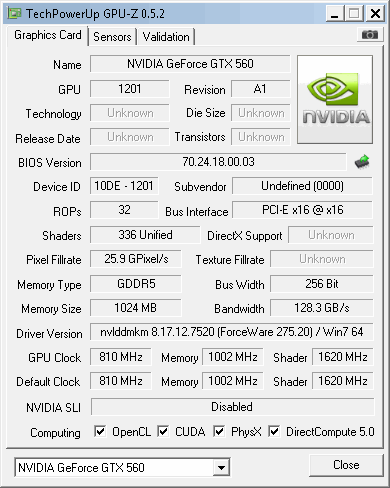
Before we move onto our testing, let’s review the specs:
Geforce GTX 560 is based on the GF114 GPU, which comes with one shader cluster less than on Geforce GTX 560 Ti. However, by turning off one shader-cluster, the GTX 560 became almost identical to the GTX 460. Still, the latter is based on the older GF104 GPU with 336 shaders or CUDA processors, 32 ROPs, 56 TMUs and a 256-bit memory interface.
Thanks to design improvements, the GF114 allows for higher clocks than the GF104. Furthermore, the GTX 560 managed to retain the GTX 460’s consumption despite running 135MHz faster for the GPU and 400MHz (effectively) for the memory.
All this suggests that the Geforce GTX 560 is made to fill the gap between GTX 460 and GTX 560 Ti cards. As far as pricing goes, the GTX 560 goes for €150 whereas the GTX 560 Ti costs €20 more. The GTX 460 is currently priced at €125.
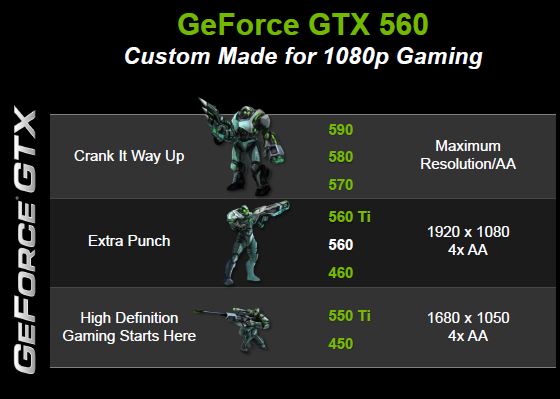
All three of these Geforce cards are classified as so called gamers’ sweet spot, meaning that average budget gamers will love them. The optimum gaming resolution is 1680x1050, although 1920x1080 is possible as well depending on the game and detail settings.
Club3D GTX 560 CoolStream Edition is 21cm long, just like most other GTX 560 cards. It sports a high performance CoolStream series cooler with a large heatsink and two heatpipes. 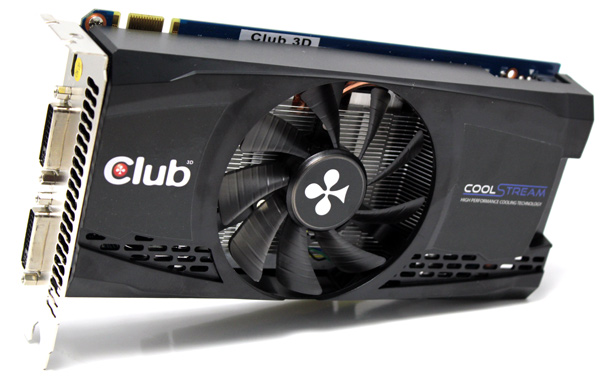
CoolStream cooling comes with unique fan blade design, which should increase airflow while reducing noise. Although we didn’t find it to be the quietest GTX 560 we’ve tested thus far, GTX 560 CoolStream Edition is not exactly loud either. You will hear it but it won’t be very loud, not even under full load; the fan is an 83mm, Everflow model: T129215Su, 0.50AMP.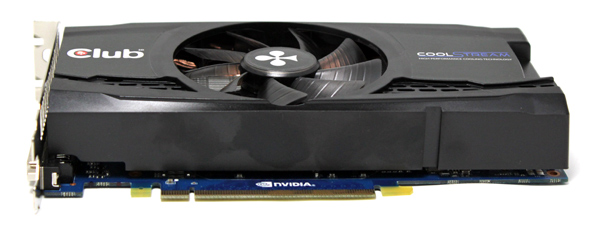
Club3D used its standard color scheme – a blue PCB and a black dual-slot cooler. The PCB has Nvidia’s logo on it, which suggests reference component placing scheme.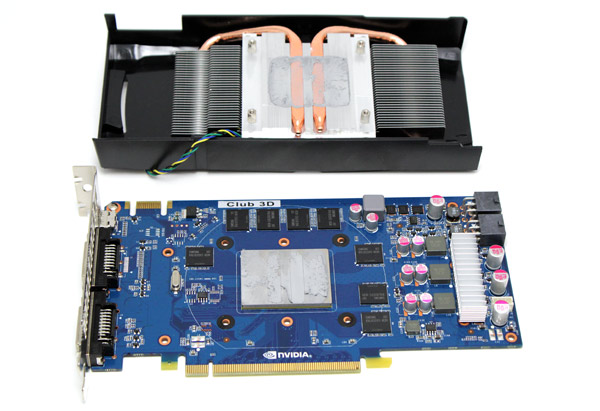
The memory is cooled by air from the fan only.The memory is placed on the GPU side of the PCB. The memory chips come from Samsung (model number K4G10325FE-HC04) and are specified to run at 1250MHz (5000 MHz GDDR5 effectively).
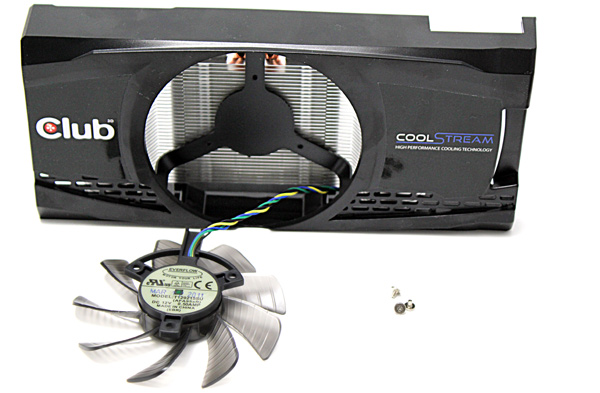
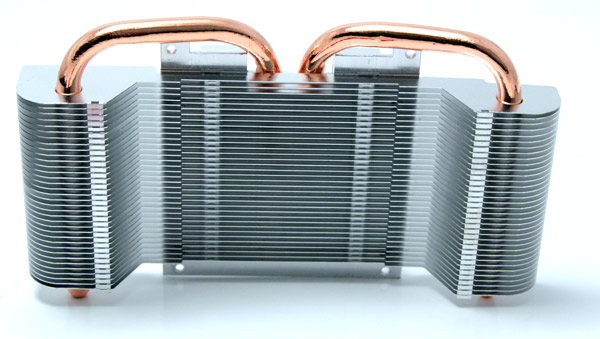
As far as video outs go, we have here the classic Nvidia design i.e. two dual link DVIs and mini-HDMI out. Note that only two video outs can be used simultaneously. Nvidia included an HDMI sound device within the GPU, so there is no need for connecting the card to your motherboard’s/soundcard’s SPDIF out to get audio and video via HDMI.
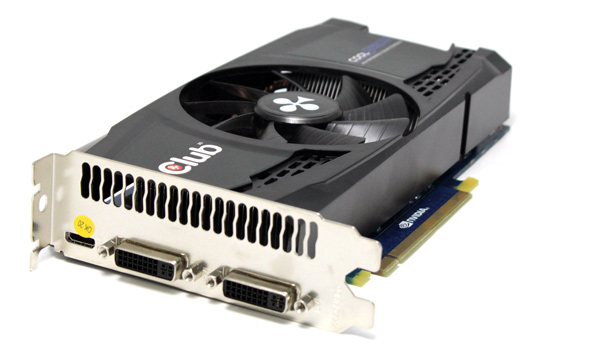
GTX 560 comes with one SLI connector. This means you can combine up to two GTX 560 cards in SLI mode for improved performance or image quality settings. The card has two 6-pin PCI-Express power connectors.
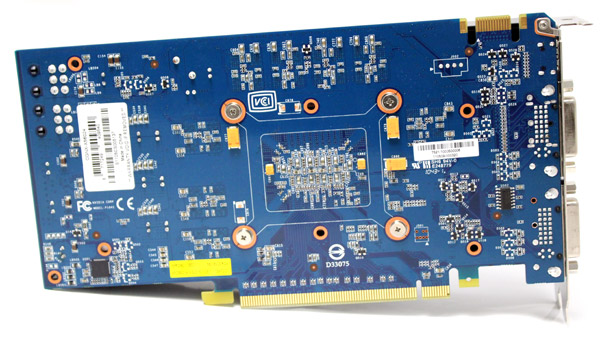
The GTX 560 CoolStream’s packaging is similar to that of GTX 560 Ti CoolStream card. Nvidia really made the design part easy for its partners, as all they had to do was erase the 'Ti's and ship them away.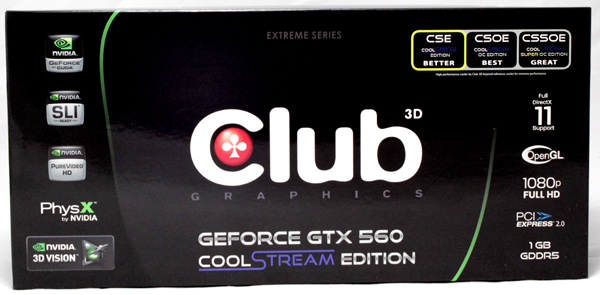
There are no video converters.
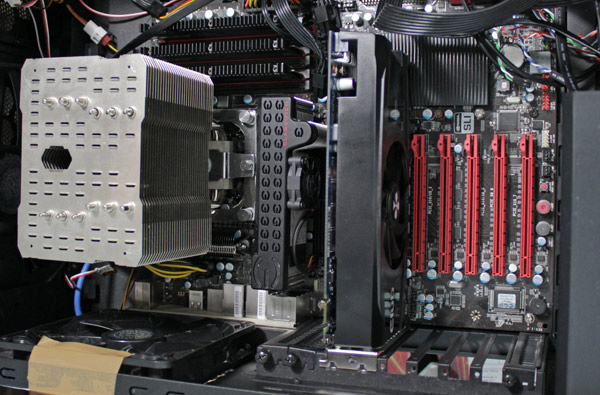
Motherboard: EVGA 4xSLI
CPU: Core i7 965 XE (Intel EIST and Vdrop enabled)
Memory: 6GB Corsair Dominator 12800 7-7-7-24
Harddisk: OCZ Vertex 2 100 GB
Power Supply: CoolerMaster Silent Pro Gold 800W
Case: CoolerMaster HAF X
Fan Controler: Kaze Master Pro 5.25"
Operating System: Win7 64-bit
Nvidia 275.20_desktop_win7_winvista_64bit
AMD 11.5 CCC
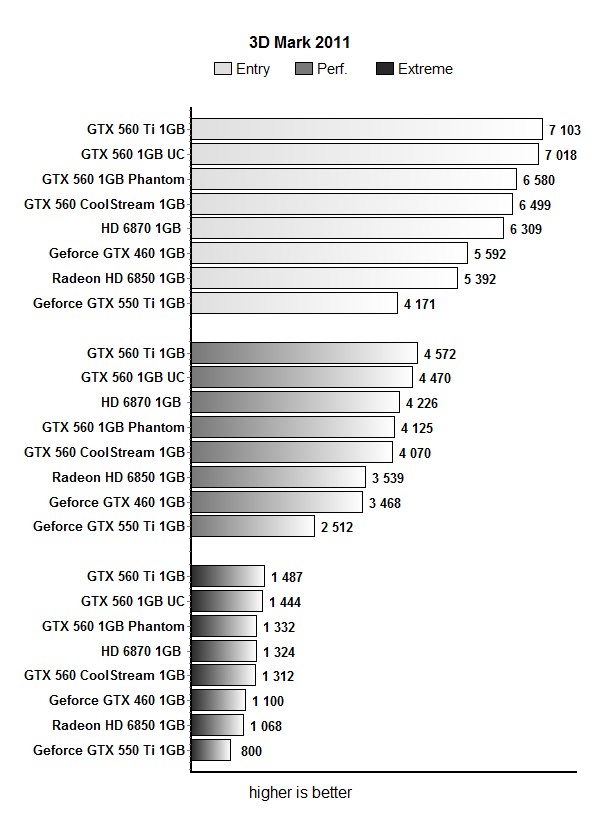
Aliens vs Predator
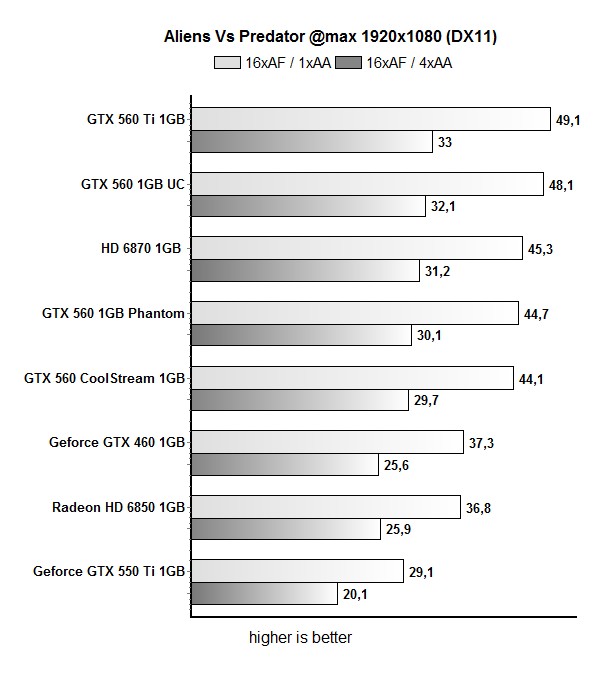
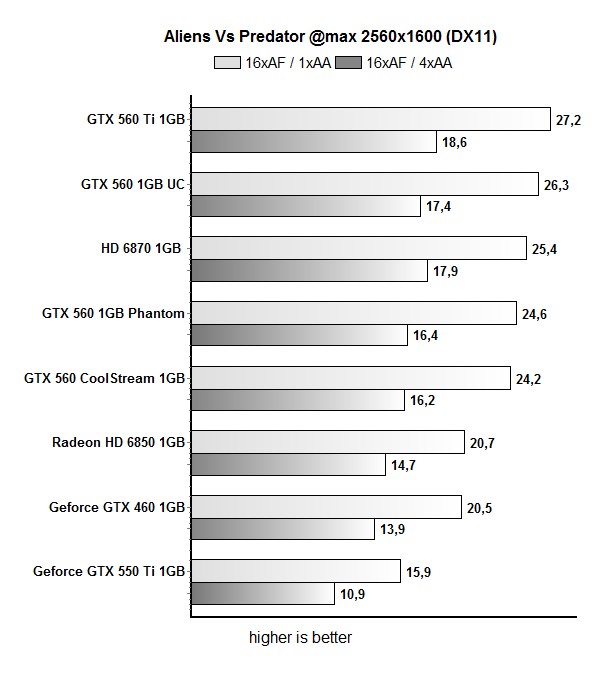
Dirt 2
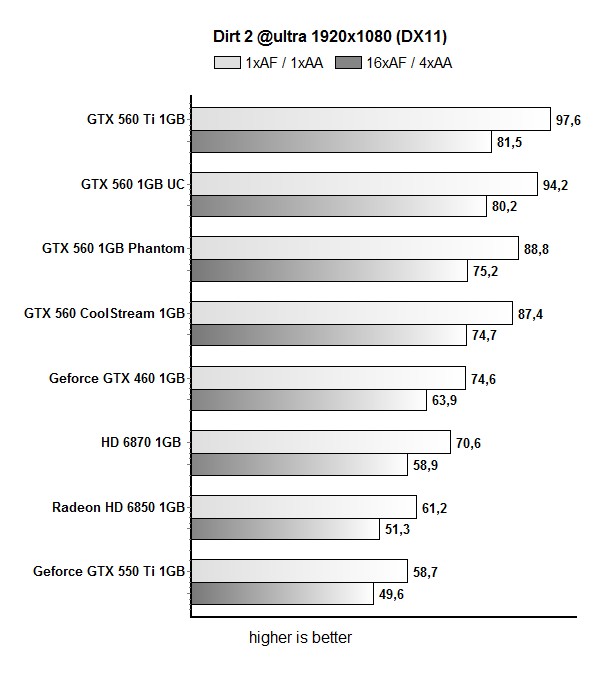
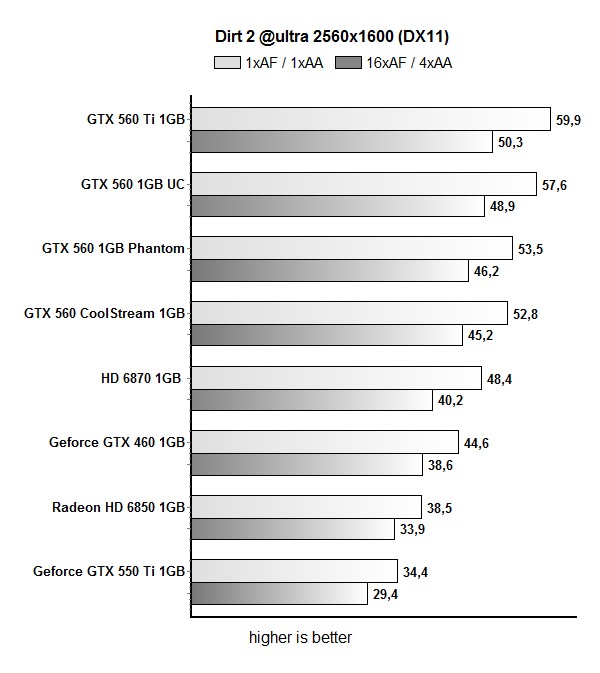
Metro 2033
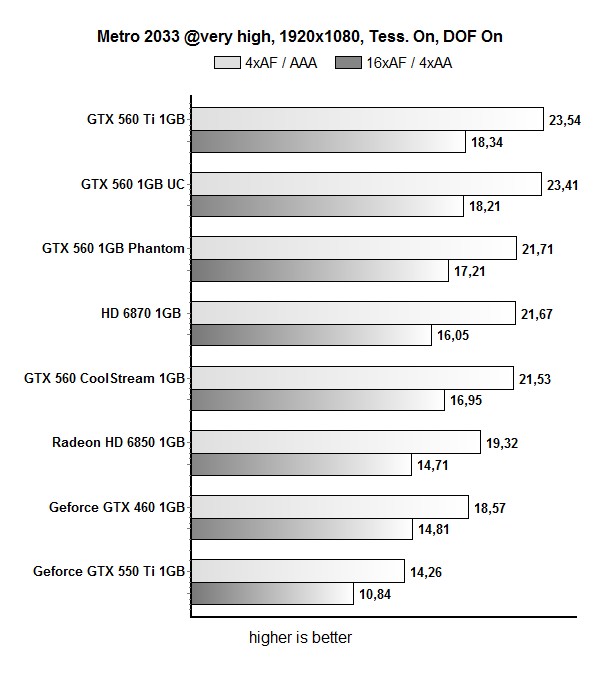
Unigine Heaven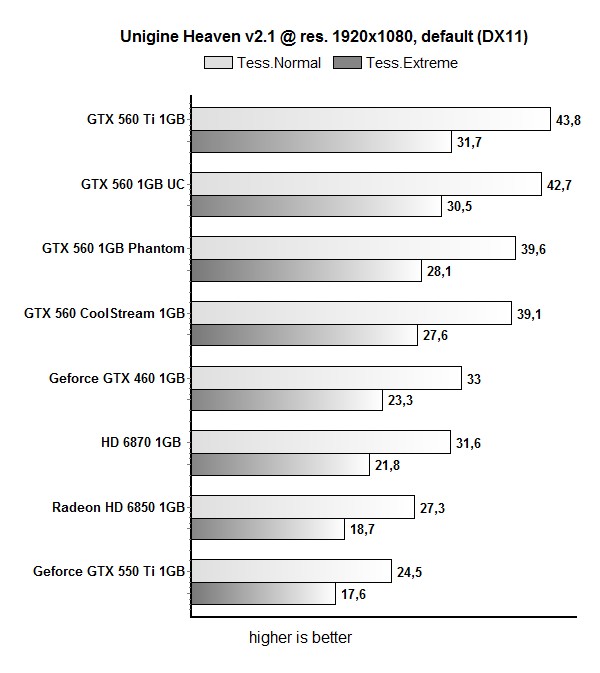
TessMark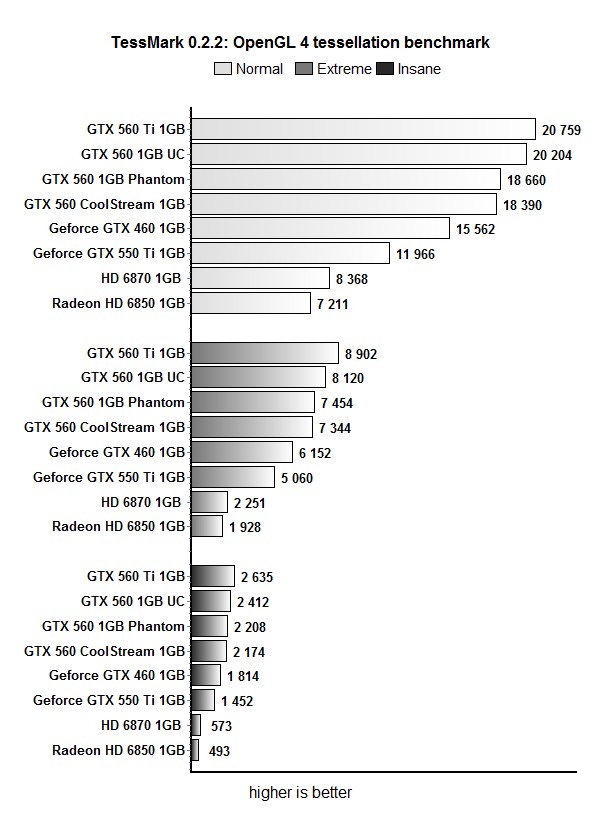
Overclocking
Club3D GTX 560 CoolStream Edition runs at reference clocks.

Overclocking the GF114 should not be a problem, regardless of whether it’s reference or specially designed GTX 560 Ti or GTX 560.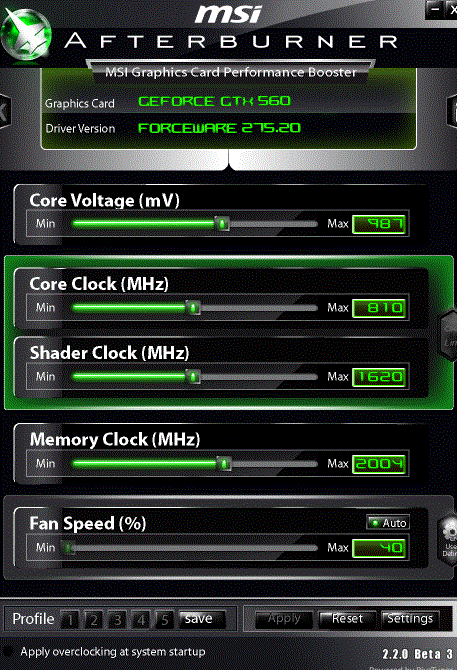
CoolStream’s cooling provides a nice foundation for a healthy overclock and we got to following results. We managed to push the GPU from 810MHz to 1005MHz, after we upped the voltage to 1087mV.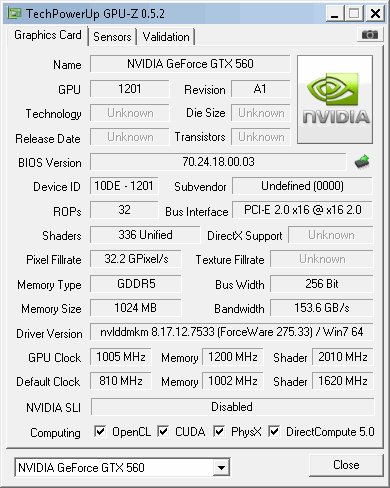
Although we didn't manage to hit constantly stable 1GHz, the GTX 560 Ultra Charged allowed us to enjoy gaming at 990MHz for the GPU.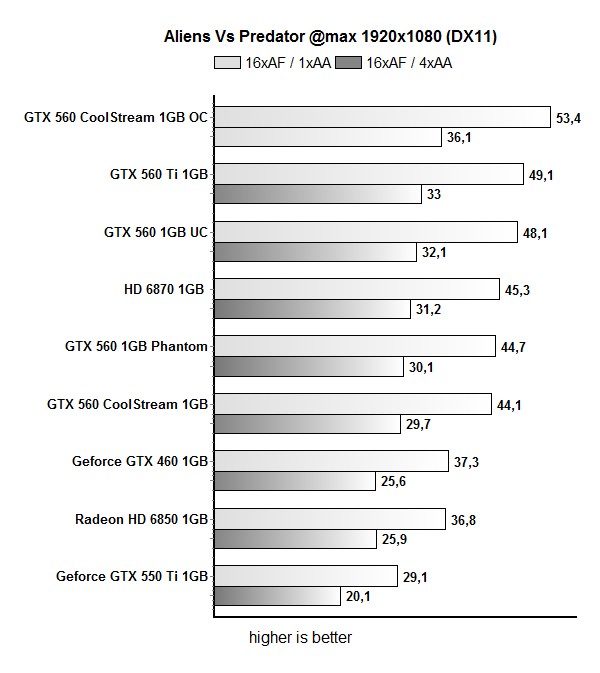
The fan was pretty loud after overclocking, but we're pleased with cooling results. 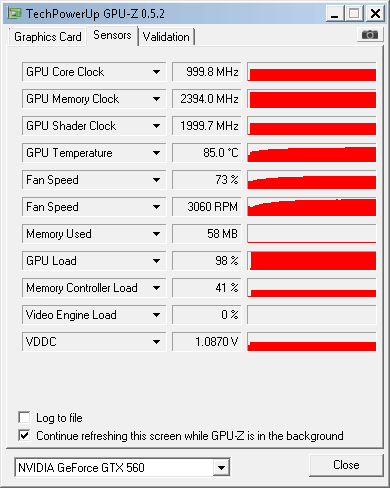
When running at reference clocks, the Club3D GTX 560 CoolStream Edition's temperatures were in normal limits, as you can see from the pictures below.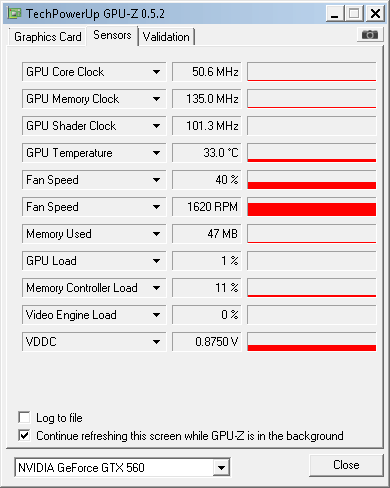
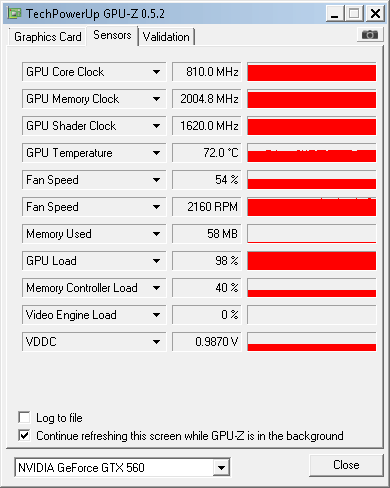
Nvidia GTX 560 is a card for 1680x1050, because that’s the resolution that any game will run just fine. That’s not to say that 1920x1080 isn’t possible - it is, but it will require sacrifices in the detail settings department.
Club3D expanded its Geforce offer with two GTX 560 cards – GTX 560 CoolStream Edition and GTX 560 CoolStream OC Edition. The difference between the aforementioned cards is only in the clocks, as the OC version comes overclocked by 20MHz.
We tested the reference clocked version and it proved to be quite ready for DirectX 11 gaming challenges, as well as hot summer days.
CoolStream cooling is pretty good – it’s not too loud but not inaudible either. Anyone who intends to do some overclocking of their own will surely know how to appreciate it. Thanks to some extra voltage, we managed to push the GPU over 1GHz.
Of course, CoolStream cooling adds a price tag of its own so Club3D's GTX 560 CoolStream Edition cad goes for €157 here, which is a few euro more than the most affordable GTX 560.



